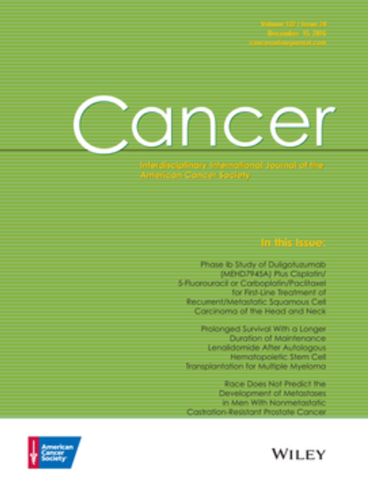Splicing factor 3b subunit 1 mutation patterns and prognostic implications in myelodysplastic syndromes, acute myeloid leukemia, and chronic lymphocytic leukemia: A retrospective study of 1691 cases
Abstract
Background
Splicing factor 3b subunit 1 (SF3B1) mutations have been implicated in hematologic malignancies, but the clinical significance of distinct SF3B1 mutation variants remain unclear.
Methods
The objective of this study was to evaluate clinicopathologic features, mutational profiles, and outcomes of 1691 patients with hematologic malignancies, including myelodysplastic syndromes (MDS; n = 402), acute myeloid leukemia (AML; n = 758), and chronic lymphocytic leukemia (CLL; n = 531).
Results
The frequency of SF3B1-mutated (SF3B1MUT) MDS, AML, and CLL was 70 of 402 patients (17.4%), 23 of 758 patients (3.0%), and 45 of 531 patients (8.5%), respectively. p.K700E was the most prevalent SF3B1MUT variant and was identified in 43 of 70 of patients with MDS (61.4%), in seven of 23 patients with AML (30.4%), and in 19 of 45 patients with CLL (42.2%). In MDS and AML, TET2 was the most frequent co-mutated gene in patients with SF3B1MUT disease (20 of 70 patients with MDS [28.6%]; 11 of 23 patients with AML [47.8%]). For patients with SF3B1MUT CLL, the most common co-mutated genes were ATM (11 of 45; 24.4%) and TP53 (11 of 45; 24.4%). Kaplan–Meier analysis indicated that the SF3B1 p.K700E variant was significantly associated with improved overall survival (OS) and progression-free survival (PFS) in patients who had MDS (p < .001 and p = .016, respectively) but with worse OS and PFS in those who had AML (p = .006 and p = .006, respectively) compared with those who had wild-type SF3B1. In patients who had CLL, p.I704F was associated with reduced OS (p < .001) and p.K700E was associated with a shorter time-to-first treatment (p = .028) compared with those who had wild-type SF3B1. Multivariable analysis identified p.K700E as an independent protective factor for OS in patients with MDS (p = .048) but as an independent risk factor for both OS and PFS in patients with AML (p = .036 and p = .035, respectively) and for the time to first treatment in patients with CLL (p = .033).
Conclusions
Specific SF3B1 variants should be incorporated into prognostic stratification for hematologic malignancies.

 求助内容:
求助内容: 应助结果提醒方式:
应助结果提醒方式:


